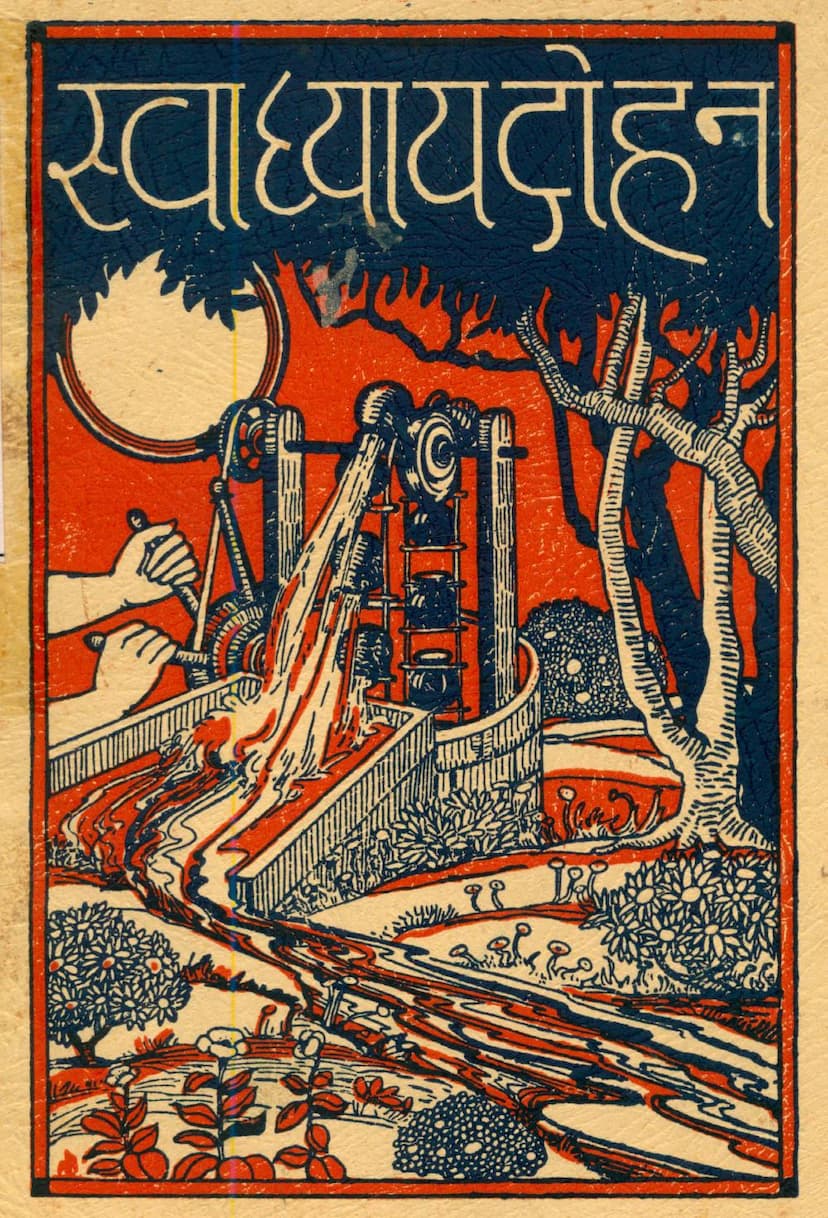Swadhyay Dohanam
Added to library: September 2, 2025

Summary
"Swadhyay Dohanam" (स्वाध्यायदोहनम्), compiled by Kanakvijay Muni and published by Vijaydansuri Granthmala, is a significant Jain text that focuses on the importance and practice of "Swadhyay" (self-study or scripture study) as a vital component of spiritual discipline. The book is the 20th publication in the "Acharyadev Shrimad Vijaydansuri Granthmala" series.
Here's a comprehensive summary based on the provided pages:
Core Theme: The Power of Swadhyay
The central message of "Swadhyay Dohanam" is the profound significance of Swadhyay in the Jain path of liberation. It emphasizes that Swadhyay is not merely reading scriptures but an integral part of tapa (asceticism) that purifies the soul and fosters self-awareness.
Key Aspects of Swadhyay:
- Definition and Etymology: Swadhyay is derived from "su" (good/proper) and "adhyay" (study), signifying the act of studying well or with deep understanding.
- Integral Part of Tapa: The text highlights Swadhyay as a crucial element among the six types of inner asceticism (abhyantar tapa). Without Swadhyay, the practice of other austerities remains incomplete.
- Soul Purification and Awareness: Swadhyay creates an atmosphere conducive to inner purification and the awakening of the soul.
- Means to Higher States: Through Swadhyay, one attains pure meditation (prasasta jhana), understands ultimate truths (sarva paramartha), and cultivates detachment (vairagya) moment by moment.
- Five Forms of Swadhyay: The text outlines five methods of practicing Swadhyay:
- Vachana (Reading): Reciting scriptures.
- Prachhana (Inquiry): Asking questions to clarify doubts.
- Paravartana (Recitation/Explanation): Re-explaining or teaching what has been learned.
- Anupreksha (Contemplation/Meditation): Deeply reflecting on the meaning and implications of the scriptures.
- Dharmakatha (Religious Discourse): Listening to or narrating religious stories and teachings.
- Three Fundamental Types of Swadhyay: Beyond the five methods, Swadhyay is also categorized into three fundamental types:
- Prarthana (Prayer/Supplication): A humble and earnest appeal to the virtues of the enlightened beings.
- Stavana (Praise/Eulogy): Praising the qualities of the venerable ones, which also involves self-criticism for one's own shortcomings.
- Tattva-chintan (Philosophical Contemplation): Deeply analyzing and reflecting upon the profound truths of Jainism, leading to the discernment between what is to be abandoned (heya) and what is to be embraced (upadeya).
Content and Structure:
The book is a compilation of devotional hymns and philosophical verses known as stavas and prarthanas from ancient Jain masters. These compositions are drawn from various prestigious Jain texts, including:
- Trivishti-slakapurusha Charitra (त्रिषष्टिः पर्व): A major part of the book features hymns dedicated to the 24 Tirthankaras, starting with Lord Rishabhadeva (Adinath). These hymns are presented in Sanskrit and Prakrit, often accompanied by descriptions of the context in which they were composed or recited (e.g., during the birth, initiation, or attainment of omniscience of a Tirthankara, often inspired by Indra or great kings).
- Works of Acharya Hemchandrasuri: Several hymns are attributed to the great Acharya Hemchandrasuri, highlighting his prolific contribution to Jain literature.
- Works of other esteemed Acharyas and Munis: The compilation includes verses from prominent spiritual figures like Acharya Ratnashekhar Suri, Acharya Sadhucharit Sidhharsigani, Acharya Bhavdev Suri, Upadhyay Yashovijayji, Upadhyay Vinayvijayji, and Muni Haribhadra Suri.
- Specific Themes: The hymns cover various aspects of Jain philosophy and practice, including:
- Praise of the Tirthankaras and their attributes.
- The importance of the Navapada (Nava-pad, the nine supreme entities in Jainism).
- The nature of the soul and karma.
- The path to liberation.
- Devotional prayers for spiritual progress.
Purpose and Inspiration:
The compilation was inspired by the desire to gather devotional and philosophical hymns related to Swadhyay into a single collection. The compiler, Muni Kanakvijay, felt this need while reading the "Trivishti-slakapurusha Charitra." He acknowledges that this is his first attempt at compilation and editing, expressing humility about any potential shortcomings.
Editorial and Publication Details:
- Editor: Muni Kanakvijay, a disciple of Acharyadev Shrimad Vijayramchandrasuri.
- Publisher: Acharyadev Shrimad Vijaydansuri Granthmala, Gopipura, Surat.
- Sponsorship: The publication was generously funded by Shresthi Mulchand Dahyabhai Dalal of Khambhat (now Cambay), in memory of his wife's observance of the Gyan Panchami fast.
- Value: The book was priced modestly (two annas) to ensure wider accessibility and prevent misuse of complimentary copies.
- Date of Publication: V.S. 1996 (1940 CE).
Spiritual Significance:
"Swadhyay Dohanam" serves as a guide for spiritual aspirants, encouraging them to engage deeply with the teachings of the Tirthankaras. By immersing themselves in these verses through reading, contemplation, and reflection, individuals can strengthen their devotion, understand the essence of Jain Dharma, and progress on the path to spiritual upliftment. The title itself, "Swadhyay Dohanam," suggests drawing forth or extracting the essence ("dohanam") of spiritual knowledge through self-study ("swadhyay").